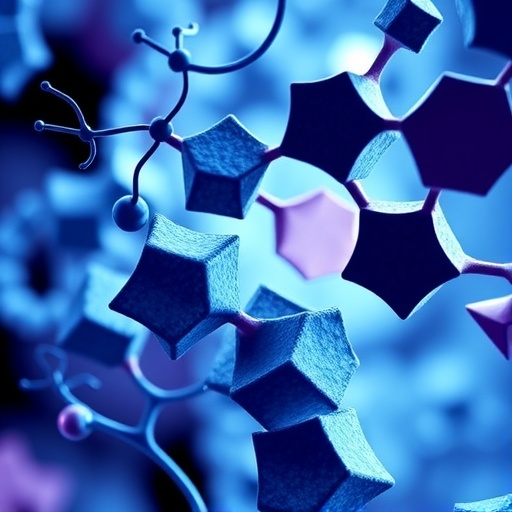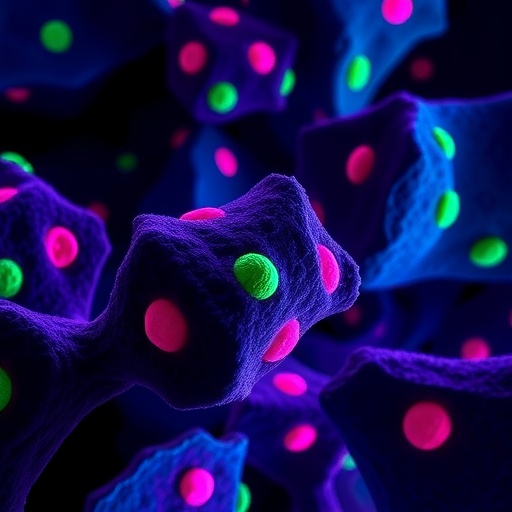Steatotic liver disease, primarily driven by metabolic dysfunction and alcohol-related injury, has surged to become the preeminent cause of chronic liver pathology worldwide, overtaking viral hepatitis as the leading culprit. Metabolic dysfunction-associated steatotic liver disease (MASLD), along with alcohol-related liver disease (ALD) and their coexistence (MetALD), now constitute the dominant etiologies behind this global health challenge. The prevalence statistics are alarming—MASLD alone is estimated to affect over 30% of adults globally, highlighting its vast and escalating public health burden. Concurrently, alcohol consumption remains a significant contributor, with heavy drinking implicated in up to 95% of steatotic liver disease cases and closely associated with a consequential 10% progression rate to hepatocellular carcinoma (HCC).
Recent genetic research has illuminated the complex molecular underpinnings dictating individual susceptibility to steatotic liver disease. Genome-wide association studies have identified key allelic variants integral to disease pathogenesis. The variant PNPLA3 I148M (rs738409) emerges as the most potent genetic determinant, modulating lipid droplet metabolism within hepatocytes and hepatic stellate cells, thereby catalyzing steatosis and predisposing individuals to progressive fibrosis and oncogenesis. The TM6SF2 E167K (rs58542926) mutation impacts very-low-density lipoprotein secretion mechanisms, resulting in intracellular triglyceride retention and enhancing steatotic risk. Furthermore, the MBOAT7 rs641738 polymorphism interferes with phospholipid remodeling, fostering hepatic lipid accumulation. Conversely, the HSD17B13 rs72613567 variant exerts a protective role by mitigating steatosis and inflammatory responses, illustrating the intricate balance of genetic influences. These genotypic factors act synergistically with environmental elements such as obesity, insulin resistance, and sedentary lifestyle patterns to intensify hepatic injury, underpinning the multifactorial nature of MASLD.
A defining feature of MASLD progression is the complex cellular interplay precipitated by hepatocellular damage. Initial injury induces the release of damage-associated molecular patterns (DAMPs), reactive oxygen species (ROS), and extracellular vesicles, which collectively initiate a robust inflammatory cascade. Kupffer cells and recruited monocyte-derived macrophages amplify this response through an orchestrated secretion of cytokines and chemokines, fostering a pro-inflammatory milieu. Neutrophils, while traditionally implicated in injury propagation, exhibit dualistic roles by also facilitating resolution phases. Central to fibrosis is the activation of hepatic stellate cells (HSCs), which transdifferentiate into myofibroblast-like cells under the influence of IL-6–STAT3, YAP/TAZ, and TGF-β signaling pathways. Transcription factors JUNB and RUNX1/2 fine-tune this activation, whereas sirtuin 6 offers a counter-regulatory effect by deacetylating YAP/TAZ, thus repressing HSC activation. The extracellular matrix protein osteopontin, secreted by metabolically stressed hepatocytes, further propagates fibrogenesis, elucidating molecular links between metabolic dysfunction and stromal remodeling.
While metabolic and alcohol-associated liver diseases share overlapping pathological pathways, distinct mechanisms characterize ALD. Acetaldehyde toxicity serves as a hallmark of ALD pathogenesis, inducing oxidative stress and mitochondrial dysfunction. Genetic predisposition intersects with ALD largely through variants in PNPLA3, TM6SF2, and HSD17B13, emphasizing their broad role across steatotic liver disease spectra. Notably, ALD disrupts gut-liver axis homeostasis by impairing vitamin B6 biosynthesis and glutathione metabolism, exacerbating oxidative injury. Histologically, neutrophilic infiltration typifies alcoholic hepatitis and is driven by IL-8/CXCL8 dependent chemotaxis. Therapeutic strategies targeting chemokine receptors CXCR1/2 show promise in modulating neutrophil behavior, aiming to attenuate inflammatory damage while harnessing neutrophils’ paradoxical regenerative functions through macrophage crosstalk and hepatocyte proliferation.
The trajectory from chronic steatotic liver injury to hepatocellular carcinoma constitutes a continuum marked by cumulative genomic instability, fibrotic remodeling, and immune dysregulation. Epidemiological shifts reveal a decline in viral hepatitis-related HCC juxtaposed against a rise in metabolic and alcohol-induced hepatic cancers. Notably, MASH-HCC harbors distinct mutational landscapes with frequent alterations in ACVR2A, TERT, and CTNNB1 genes, contrasting with ALD-HCC’s prevalence of TP53 and ARID1A mutations. The tumor immune microenvironment in MASH-HCC is characterized by diminished macrophage and natural killer cell infiltration, indicative of impaired immune surveillance and potential challenges in immunotherapy responsiveness.
Preclinical investigations underscore the oncogenic utility of the PNPLA3 I148M variant, which potentiates HCC development under conditions of alcohol excess or metabolic stress. Intracellular communication via YAP-associated extracellular vesicles fosters tumor cell crosstalk and metastatic competence. Furthermore, altered bile acid homeostasis contributes substantially to T-cell exhaustion through cumulative oxidative and endoplasmic reticulum stress, highlighting metabolic dysregulation as a critical influencer of tumor immunity and progression.
Recent advances in therapeutics offer renewed hope in addressing steatotic liver disease and its sequelae. Thyroid hormone receptor-β (THR-β) agonists, exemplified by resmetirom, have achieved a milestone with FDA approval for MASH, demonstrating fibrosis improvement in approximately one-quarter of treated patients without exacerbating steatosis. This success validates thyroid hormone signaling as a pivotal metabolic intervention target. In parallel, GLP-1 based poly-agonists such as tirzepatide and retatrutide, which engage multiple incretin receptors, attain remarkable hepatic fat reductions up to 80% and achieve histological resolution in over 60% of cases, revolutionizing metabolic modulation strategies.
Moreover, fibroblast growth factor 21 (FGF21) analogues like pegozafermin and efruxifermin improve liver stiffness and attenuate fibrosis by augmenting mitochondrial performance and promoting lipid oxidation. Complementing these are farnesoid X receptor (FXR) agonists and bile acid modulators such as cilofexor and obeticholic acid, which restore bile acid equilibrium and mitigate inflammatory signaling. Additionally, FGF19 analogue aldafermin exhibits promising efficacy in reducing fibrosis in cirrhotic MASH, spotlighting the therapeutic importance of bile acid pathways.
In the arena of liver cancer therapeutics, immunotherapy-based regimens have transformed the landscape for advanced hepatocellular carcinoma. The adjuvant combination of atezolizumab and bevacizumab markedly extends recurrence-free survival following surgical resection. Frontline therapies including durvalumab plus tremelimumab (STRIDE protocol) and sintilimab plus bevacizumab biosimilar (ORIENT-32 trial) demonstrate superior overall survival compared with sorafenib, applicable across viral and non-viral etiologies, signaling a paradigm shift in oncological management.
Preventive and translational strategies underscore the critical need for personalized medicine approaches tailored to the heterogeneity of steatotic liver disease and its associated cancers. Integrative profiling encompassing genetic predispositions, metabolic states, and immune landscapes is vital for stratifying risk and optimizing intervention. Foundational public health measures—weight management, alcohol intake reduction, and glycemic control—remain indispensable pillars of risk mitigation. However, an era of molecularly targeted therapeutics promises to redefine disease trajectories and improve clinical outcomes substantially.
This comprehensive synthesis offered by Yang and colleagues delineates a robust framework interlinking steatotic liver disease pathogenesis with fibrosis and carcinogenesis. As the global burden advances, understanding this intricate biological network and exploiting emerging therapeutic targets will be paramount in addressing one of the most pressing hepatic health challenges of the 21st century.
Subject of Research: Steatotic liver disease pathogenesis, genetic determinants, cellular mechanisms, and therapeutic targets including disease progression to hepatocellular carcinoma.
Article Title: Steatotic liver disease and cancer: from pathogenesis to therapeutic targets
News Publication Date: Not specified in the source content (publication year 2025 indicated)
Web References: http://dx.doi.org/10.1136/egastro-2025-100218
Image Credits: By Xiaocheng Charlie Dong et al.
Keywords: Liver, Cancer
Tags: alcohol-related liver diseasechronic liver pathologyemerging therapeutic advances in liver diseasegenetic determinants of liver diseasehepatocellular carcinoma riskliver disease progression mechanismsMBOAT7 rs641738 polymorphismmetabolic dysfunction-associated steatotic liver diseasePNPLA3 I148M variantpublic health burden of liver diseaseSteatotic liver diseaseTM6SF2 E167K mutation





